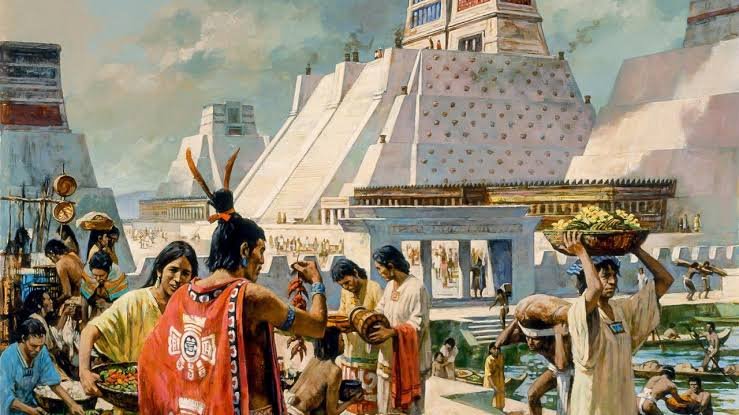History of number system
Number system, which has been the backbone to risen ancient civilizations, dating back to ancient Egypt, Babylon, Romans etc.
From the 20,000 years old Ishango, which is believed to probably be the first pocket calculator for natural numerals and was used for primitive accounting, to the stone carving from Karnak, dating back to 1500BC. Numbers and counting began around 4000BC in Sumeria (one of the earliest civilizations) with livestocks, crops, people to be kept tracked and organized. It was used to add up or trade.
Babylon, about 5000 years ago, which has one of the oldest systems in existence, developed a base-60 system and positional system for writing larger numbers with fewer symbols. Their numeric system had no zero and they are responsible for the measurement of angles and time like 60 seconds equal 1 minute.
While ancient Egypt transformed number system from counting to measuring things. They were the first to represent numbers with symbols like rope for 10, coiled rope for 100.
Romans, Arabs, Chinese, Indians, Europe, Greeks etc, all had histories with number systems.
Greek Philosophers like Pythagoras and Archimedes were given credit to, for systematic study of numbers, Pythagoras was the first Man to bring the idea of odd and even into reality, and He called odd numbers, males, and even numbers, females.
Down to the Modern world
Our Modern Numbers, which is also called Hindu-Arabic Numbers, are the combinations of 10 symbols (digits) - 1, 2, 3, 4, 5, 6, 7, 8, 9, 0.
It was introduced into the European system by an Italian Mathematician, LEONARDO PISANO, also called Fibonacci.
He got educated in North Africa, where He learned Hindu-Arabic Numerals. The Number system varied from different civilizations, like the Babylonians, Egyptians, Medivials, Indians etc. The Number System came due to Quantity challenge, so numbering (counting) became the order to get things done, which was mostly done by symbol, when counting could no longer help.
Zero Hero
About 3000 years ago, zeros were taken as nothing and wasn’t significant, that is ‘4’ and ‘40’ made no difference. Zero came to play when humans needed something to represent nil value. The discovery of Zero cannot be accounted for as some believe it was invented by the Babylonians, some, Mayans, some, Indians. But most believe it was invented by ARYABHATTA, an Indian mathematician. In ancient time, zero was taken as placeholder, taking space in between digits. E.g. ‘608’ was taken as ‘6 8’. And some others used black space when calculating a problem.
The Number System
Number system is a writing system for expressing numbers, that is a mathematical notation for representing numbers of a given set, using digits. The number system evolved from Natural numbers to Integers to Rational to Real, then to complex Numbers.
The Natural Numbers
The Natural Number, also called counting numbers or whole numbers represented by N , are those used for counting and ordering. e.g. 1, 2, 3, 4, 5.
The Integers
An Integer is a number that can be written without a fractional component. e.g. 32,-5. Integers are natural numbers consisting of positive numbers, negative numbers and zero. It works with the addition and multiplication arithmetic operation, that is when you add two integers, you get an integer as well, but not divisible.
It was first introduced by Arbermouth Holst, in 1563 as He experiment on animals, thereby, having to count the animals. As the animals He kept increased in number, it became a problem for him to keep number, so He invented a number system of addition and multiplication. Then, in 1890, Japanese mathematicians developed what was invented, and modified it. It is represented by Z, from the name Zahlen, a Germany world , which means “untouched” in the latin word.
Negative numbers were later accepted into the number system around the 19th century, when things like temperature the moves backward had to be considered. E.g. -35 oc, and it was seen to be useful for solving equations like quadratic equations. Indian mathematician, Brahmagupta, is known to have started using negative numbers around 630 AD. It was around this time that positive numbers were used to represent assets and negative numbers, debts. The Chinese used red rods to represents negative numbers. Europe , around 1545, started using negative numbers.
Rational Numbers
Rational numbers, represented by Q, is any number that can be expressed as quotient or fraction p/q of any two integer where q is not zero. e.g 1/4.
Rational numbers came to play when it was not enough to use integers, like sharing one orange with two persons, that is, ½.
Real numbers
Real numbers are numbers on the real axis, x. It is represented by R it can include natural numbers, integers, rational and irrational numbers. e.g 1, 2/3, -5, √2 (1. 41421356. Real number values are quantity along a continuous line. Real numbers are points on an infinitely long line called real line. Any real number can be determined by a possibly infinite decimal representation like 6. 607
Complex numbers
Complex numbers is numbers that can be expressed in the form a+bi, where a and b are real and imaginary numbers and i is the imaginary unit. it is represented by C.
Geronimo Cardano (1501 - 1576) developed the complex numbers. As a Scholar, Cardano was into several competions. In one particular competition, a scholar, Niccolo Tartaglia, derived a formula as a solution to a special type of cubic equation. On disclosing the formula, Cardano published Tartaglia’s discovery, in which He generalized Tartaglia formula using negative numbers and their roots, by doing this, He could determine closed formulae for the solutions of all quadratic and cubic equation, it was published in 1545. It was the discovery of complex numbers. The symbol i, of the imaginary unit was introduced by Leonhard Euler, in 1777.
Carl Friedrich, in 1831, gave a geometrical interpretation of complex numbers by considering the Cartesian coordinate system. William R. Hamilton, later gave arithmetical meaning to the complex numbers.
References
http://www.tutorcircle.com
http://www.mathsisfun.com
http://www.deseretnews.com
https://en.m.wikipedia.org
.jpg)
.jpg)
.jpg)
.jpg)
.jpg)

.jpg)
.jpg)
.jpg)
.jpg)
.jpg)
.jpg)